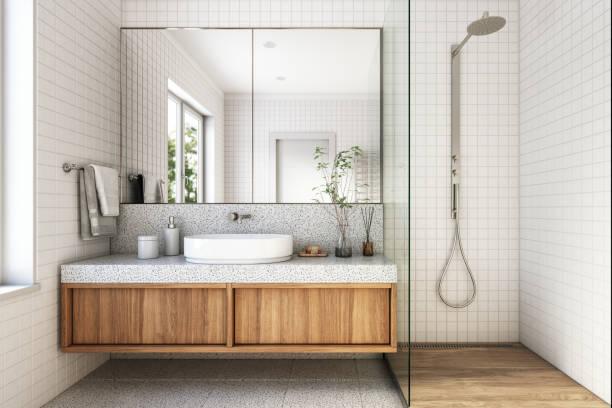Bathroom

Remove water spots from chrome.
The natural minerals found in hard water leave pesky water stains on household fixtures. If white vinegar and warm water has not worked for you, try to removed by using a bit of lemon juice. You can also use baby oil to polish chrome after cleaning it.
Clean shower curtain liners.
*Simply take down the curtain and toss it in your washing machine.
*Add a bath towel to help with scrubbing the shower liner.
*Make sure you keep it on the gentle setting to avoid damaging the liner.
*Hang the shower curtain liner to dry.
This method helps remove any built-up mold or mildew, which is very common on shower curtain liners that are constantly exposed to moisture and warmth.
Also, dirty shower curtain liners can be put in the washing machine for easy cleaning.
Clean the exhaust fan.
Stand on a sturdy step stool to get a good look at the grate that covers your fan. It might be held in place by screws, but most modern fan grates are held in place with easy-to-remove tension clips that don’t require tools. After removing the grate, wash it with warm water and dish soap.
Remove as much dust as possible from the fan assembly using a vacuum wand attachment or a can of compressed air. Follow up with a dusting cloth to get whatever dust remains.
After that, just dry and replace the grate. Don’t forget to turn the circuit breaker back on!
Remove buildup on showerheads and faucets.
Place a bag of vinegar over your showerhead to remove tough, crusty buildup. Similarly, you can put paper towels drenched in vinegar on faucets. Let the vinegar sit for a while before removing the bag or paper towels.
Unclog drains.
If a drain is particularly clogged up, it’s best to bring in a professional plumber to ensure that expensive damage isn’t done. However, for less serious issues, you can use dish soap, grab a plunger, baking soda and boiling water, the wire hanger method, and drain snake. You can also visit the link below for more information.
Use painter’s tape when caulking.
Trying to get straight, clean lines when caulking can be an exercise in frustration if you’re out of caulking practice. With painter’s tape, though, it could be a piece of cake every time.
Just apply the painter’s tape above and below the area you’ll be caulking, apply the caulk, and smooth it out, and remove the tape while the caulk is still wet. Voila! A seamless caulk job.
Kitchen

Microwave used sponges.
Dirty sponges can stink and spread bacteria onto the surfaces you’re trying to clean.
The scientists reported that simply microwaving sponges (completely wet, never dry) for two minutes at high power killed or inactivated over 99 percent of pathogens in sponges that had been soaked in a “witch’s brew” of fecal bacteria, viruses, protozoan parasites, and bacterial spores.
Never put a dry sponge in the microwave, however, to avoid a fire hazard.
Polish stainless steel.
Stainless steel is prone to tarnishing and water marks, so polish your steel items regularly to restore its shine.
You can polish the surface of stainless steel using water, non-toxic cleaners like vinegar or olive oil, or a specialized steel cleaner. Polishing stainless steel the right way will help you thoroughly clean the appliance and avoid scratching it further. Choose which method is best for the object and start polishing your stainless steel item.
Polish silver.
You can use ketchup to remove the tarnish from your silver utensils and baking soda to clean and deodorize throughout your home.

0 Comments Leave a comment